The Volksmarine: GDR’s navy (1949-1990)
 160 ships in 1990
160 ships in 1990
Introduction: East German Navy: The Volksmarine
Warsaw Pact navies are often overlooked in the grand scheme of the cold war, easily shadowed by the ludicrous size reached by the Soviet Navy in the 1980s. Yet like Poland and Romania, East Germany had a large green water navy. The Volksmarine had no large missile destroyer or submarines, but frigates, corvettes and smaller ships, counting on a dynamic home industry to support its needs and defend the Baltic, and even export back to USSR. This post covers the history, organization, and ships classes of the Volksmarine until 1990.
The Soviet Union gradually rearmed the German Democratic Republic founded in October 1949, an important satellite state, created from the Soviet Zone of Occupation. For 41 years, the East German Navy backed by USSR, was still able to keep some autonomy, helped by an existing and vigorous industry, to fill its own needs. The Volskmarine task was to guard the east prussian coast and access to eastern baltic waters.
Unlike the neighbouring Bundesmarine, the German Democratic Republic’s Navy a green water navy, but still with frigates, corvettes, landing ships, fast attack crafts, sub-chasers, coastal patrol craft, and minesweepers. In this area, the GDR created a sizeable force of capable minesweepers designed and built at Pennewerft. Most of its Fast Attack Crafts, including some experiental, were also home-built, as the sub-chasers, notably the successful ‘Hai’ series. Most of the armament and most part of the sensors and armaments however were standardized and delivered by the Soviet Union.
Fundamentally, the Volksmarine was a defensive, green water navy whic was geared to work with the Polish Navy and in coordination with the Soviet Navy in case of war with NATO, with specific tasks attributed to them in the Baltic; which was to deter any access to the eastern Baltic by western powers, and if possible, block the Skagerrak. Both for economical reasons and political ones, within the strict frame of the Warsaw pact, there was at no point an extension plan to a blue water navy, and after the fall of USSR and German reunification, its assets were all sold or discarded to adopt the Bundesmarine standards.
Full list
- 4 Thälmann class Frigates (Riga class) 1956-59 discarded 1968-69
- 3 Rostock class Frigates (Koni I type) 1978, discarded 1990s
- 16 Parchim class Corvettes (1980s, resold 1990s)*
- 5 Kobis class (Tarantul I) missile corvettes (1984-85)
- 12 Labo class LSCs (1960)*
- 6 Robbe class LSTs (1964)*
- 14 Frosch class LSTs (1976)*
- 38 Iltis class FAC/T (1958)*
- 28 P6 type FAC/T (transferred 1957-58)
- 60 Hydra class FAC/T Project 68* (1959)
- 16 Max Reichpietsch class (OSA I) FAC(M) (1962)
- 18 Shershen Type FAC/T (transferred 1969-70)
- 2 Forelle class FAC(M) (1982)* experimental boats
- 5 ‘Balcom 10’ FAC/M Project 151* (1990)
- 2 former Danish Kvintus class minesweepers (acquired 1950)
- 12 Habicht I/II class MWVs* (1953)
- 10 Krake class MWVs* (1957)
- 20 Kondor I class Coastal minesweepers* (1970)
- 30 Kondor II class Coastal minesweepers* (1971)
- 48 Schwalbe class minesweeping boats* (1952)
- 11 SO-I type sub-chasers transf. 1959-60
- 1 Hai I experimental sub-chaser (Project 12.1)*
- 1 Hai II experimental sub-chaser (Project 12.3)*
- 13 Hai III class sub-chasers (Project 12.4)*
- 26 Sperber I/II class Coastal Patrol Boats* (1966)
- 12 Sperber class Coastal Patrol Boats* (1953)
- 12 Tummler I/II class Coastal Patrol Boats* (1954)
- 7 SAS class Coastal Patrol Boats* (1948)
- 10 Bremse class Coastal Patrol Boats* (1948)
- Ernst Thälmann (1955) training vessel (ex-Danish)
Note: starred ships were built in East Germany, mostly Peenewerft, Wolgast.
Origins of the Volksmarine
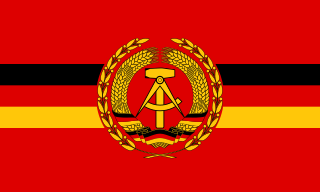 The former Kriegsmarine no longer existed but with few of its original assets still afloat in 1945. The former German Navy, which already changed name thrice, was about to be splitted in two, as Germany was under the peace treaty conditions: Between a western part and three occupation zones, soon to form the Bundesrepublik and more quolloquially “West Germany” while a state of East Germany (GDR for “German Democratic Republic”) under the orbit of Moskow was also created. Although it would take until 1956 for the Bundesmarine to be effectively created, the East German Navy appeared already in 1949, 7 October 1949. Until then, Soviet units had been stationed in East German ports, while existing ships were already used by the Volkspolizei to control traffic, fishery protection, and search for mines to clear up. However its final organization and defenitive status was only effective from 1st March 1956, like the Bundesmarine, and in response of the latter.
The former Kriegsmarine no longer existed but with few of its original assets still afloat in 1945. The former German Navy, which already changed name thrice, was about to be splitted in two, as Germany was under the peace treaty conditions: Between a western part and three occupation zones, soon to form the Bundesrepublik and more quolloquially “West Germany” while a state of East Germany (GDR for “German Democratic Republic”) under the orbit of Moskow was also created. Although it would take until 1956 for the Bundesmarine to be effectively created, the East German Navy appeared already in 1949, 7 October 1949. Until then, Soviet units had been stationed in East German ports, while existing ships were already used by the Volkspolizei to control traffic, fishery protection, and search for mines to clear up. However its final organization and defenitive status was only effective from 1st March 1956, like the Bundesmarine, and in response of the latter.
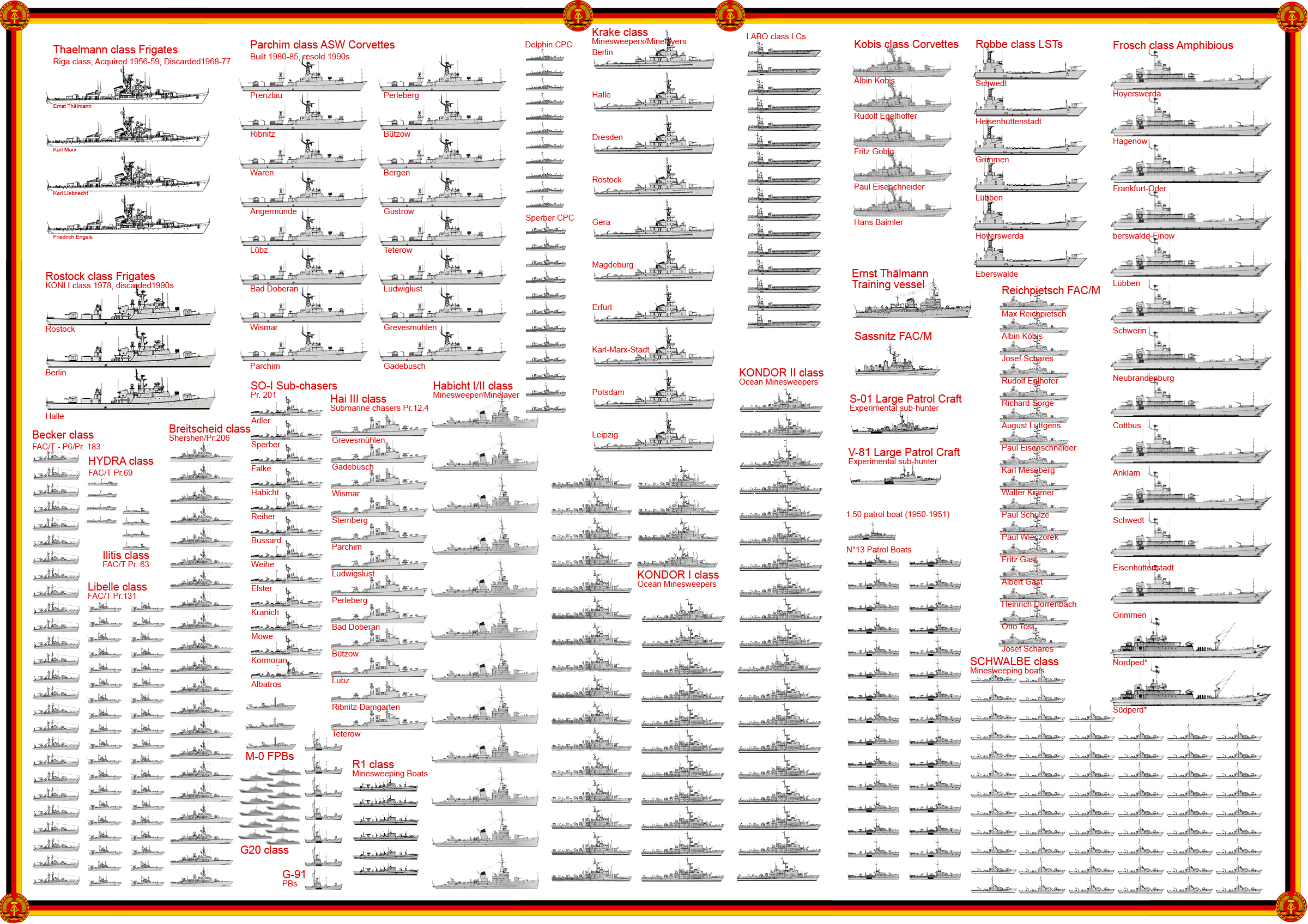
GDR Fleet during the cold war. Many of these vessels were no longer in service in the late 1980s.
The German Democratic Republic was proclaimed on 7 October 1949 and the Soviet Military Administration formally transferred power to it, being replaced by the Soviet Control Commission. In February 1950 the military Seepotizei (Sen Police) was formed under the Ministry of the Interior and in May that year the first flotilla, consisting of the former Danish fishery protection vessel Hvidbjörnen, six R-boats and probably some Flugsicherungsboote returned by the Soviets, was commissioned. However, the German Communists had already been planning to re-establish the navy, the ‘KS’ (or “Sperber”) class patrol boats having been ordered on 1st March 1949, seven months before the formal establishment of the GDR.
A reduction of reparations by 50 per cent and admission to the COMECON in 1950 benefited the country economically. An ambitious five-year plan was drawn up in 1951, designed to double industrial production by 1955. In 1952 all military police units were united into the Kasernierte Volkspolizei (Quartered People’s Police) and the Seepolizei became a part of that organisation. The Seepolizei’s first large ships, namely six ‘Habicht’ class minesweepers, were ordered and series construction of over fifty Deiphin/Tümmler class patrol boats was begun. In 1952, in grear secrecy, plans were formulated for a submarine force, to be equipped with former Kregsmarine Type VIIC U-boats, then in Soviet hands, or Soviet M’ class boats.
These plans were abandoned after the July 1953 riots, the official (though still secret) reason being economic difficulties. Meanwhile U 1308 was raised in 1953, and U 2344 two years later. but both boats were eventually broken up. After Stalin’s death in 1953 the Control Commission was abolished which encouraged the Germans, already under pressure to fulfil the plan, to rise against the authorities in June. Only intervention by Soviet troops restored order; nevertheless the government decided to revise economic policy. The Soviets announced an end to the collection of reparations as well as cancellation of debts and reduction
of the cost of the Soviet occupying forces. In March 1954 it was announced by the Soviet Union that East Germany was a sovereign state and the following year she was included in the Warsaw Pact. At that time the Seepotisei comprised six ‘Habicht’ class minesweepers nd about 100 patrol boats built locally (1950-53) plus ships retumed by the Soviets, After completion of this initial programme a further six improved Habicht’ class minesweepers and fifty Schwalbe class minesweeping boats were ordered.
After the creation of the National Volksarmee (NVA) in January 1956 the Seepolizei was transformed into the Seestretkrafte (Naval Force), By 1960 this force was increased considerably by the inclusion of four Riga’ clans frigates, twenty-seven P6 type MTBS and sixteen ‘SO 1’ type subchasers delivered by the Soviet Union as well as ten ‘Krake’ class minesweepers. From 1957 onwards, ships of the Seesmikrafte participated in combined naval exercises with units of the Polish Navy and the Soviet Baltic Fleet.
By 1982 the minesweepers, M’TBs, patrol craft and landing ships were replaced by new vessels. The ASW programme was started in 1978 to replace the ex-Soviet ‘Riga’ class frigates by Koni’ class units and the Hai class submarine-chasers by domestically-built Parchim class corvettes. The corvette construction programme was concluded in 1985 and three frigates were purchased by 1986, The last stage of the Volksmarine modernisation started in 1984 and comprised updating of the strike force, which was composed of several, mostly outdated, missile and torpedo craft. The obiective of this programme was to produce all missile-armed squadrons as the FAC(T)s were regarded as unsuitabie for modem warfare. The programme consisted of the purchase of ex-Soviet “Tarantul’ class missile craft and the construction of much smaller, locally designed “Balcom 10 missilecraft fitted with a new generation of missiles and sensors.
Thanks to this programme the East Germans were to have a more balanced and homogeneous coastal force than any other Soviet satelite state. The navy was to have a considerable strike force, coastal ASW capability, large amphibious lift capacity and numerous mine wurfare vessels. From the carly 1980, together with the Soviet and Polish navies. the Volksmarine took part in the annual joint cruises and exercises of the Warsaw Pact Baltic Joint Squadron, usually deploying one or two frigates accompanied by auxiliaries. The three-week event also included North Sea deployment under strength.
Early organization
From 1950, Soviet Navy officers helped to establish the embryo of a navy. The first organ was called the Hauptverwaltung Seepolizei or “Main Administration Sea Police” renamed Volkspolizei–See or the “People’s Police at Sea”, established on 1 July 1952. The existing maritime polices were reorganized into the Grenzpolizei–See in charge of sea frontiers, incorporated into the Deutsche Grenzpolizei at large created in 1946. By 1952, the VP–See was 8,000 personnel strong.
On 1 March 1956, the GDR was granted the creations of armed forces, and so the National People’s Army or Nationale Volksarmee (NVA) and VP–See became the Verwaltung Seestreitkräfte der NVA, Maritime Forces Administration, with a staff of abour 10,000. By November 1960, the term “Volksmarine” (People’s Navy) was termed to head all these organs. From there, the navy started to grew exponentially, mostly built locally in the GDR. Some Coastal protection ships and FACs were still provided by USSR as were helicopters, sensors and armaments, some auxiliary craft being purchased from Poland, but in the 1980s, East German industry not only provided its own corvettes (Parchim class) but also exported them to USSR in a quite unique reverse scheme inside the Warsaw Pact.
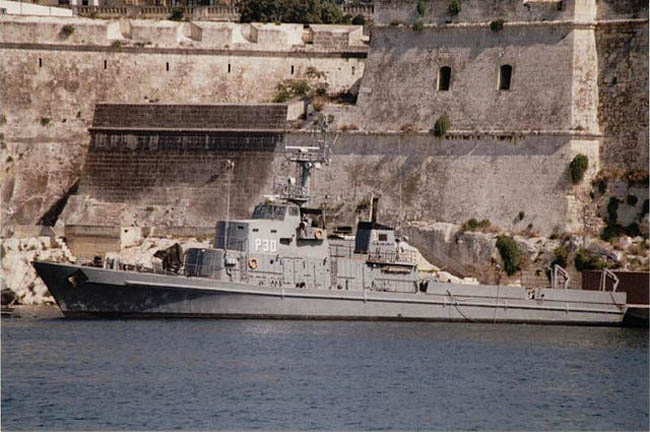
Mal P30 Malta, ex-Uechermuende, G-411
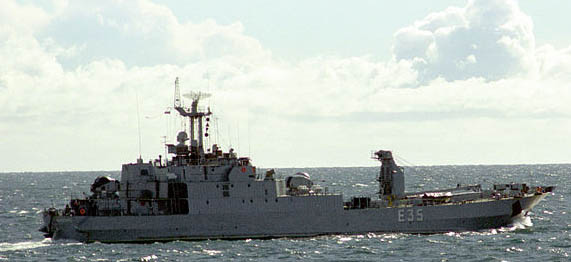
Noerdperd E-35

Bad Doberan
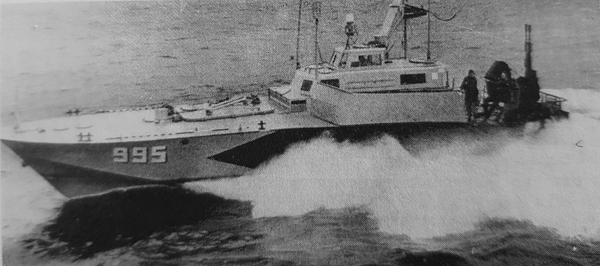
Libelle class
The largest Warsaw Pact fleet ?
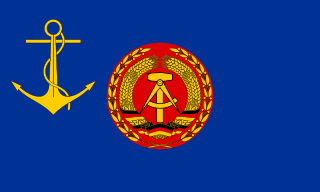 In 1990, the Volksmarine reached a sizeable size in numbers alone, not taking the tonnage into account. For memory, the WaPac countries were by alphabetical order Albania, Bulgaria (adriatic and black sea), Czechoslovakia (a river patrol), Hungary (same), Poland (Baltic), and Romania (Black sea). Perhaps the most impressive ships were to be found in Romania, with a large missile destroyer, the Muntenia, and some capable frigates, Poland has a few capable submarines, an ex-Kashin class DD, and a single corvette. Outside landlocked countries or those with a very low GDP like Albania or Bulgaria, these were a tiny spec in the mass of the Soviet Navy as it reached its peak in 1990. Of all these, despite having rather small vessels, the Volksmarine was seen as the most capable of all, also because the most specialized. With considerable assets to create multiple minefields and powerful coastal, missile-armed FACs, plus squadrons on sub-chasers (which the Soviet Navy lacked, apart dedicated corvettes and frigates), the East German Navy was a self-sustaining rampart in the Baltic. There was so much trust also in its Marine troops that it had the only amphibious force outside USSR.
In 1990, the Volksmarine reached a sizeable size in numbers alone, not taking the tonnage into account. For memory, the WaPac countries were by alphabetical order Albania, Bulgaria (adriatic and black sea), Czechoslovakia (a river patrol), Hungary (same), Poland (Baltic), and Romania (Black sea). Perhaps the most impressive ships were to be found in Romania, with a large missile destroyer, the Muntenia, and some capable frigates, Poland has a few capable submarines, an ex-Kashin class DD, and a single corvette. Outside landlocked countries or those with a very low GDP like Albania or Bulgaria, these were a tiny spec in the mass of the Soviet Navy as it reached its peak in 1990. Of all these, despite having rather small vessels, the Volksmarine was seen as the most capable of all, also because the most specialized. With considerable assets to create multiple minefields and powerful coastal, missile-armed FACs, plus squadrons on sub-chasers (which the Soviet Navy lacked, apart dedicated corvettes and frigates), the East German Navy was a self-sustaining rampart in the Baltic. There was so much trust also in its Marine troops that it had the only amphibious force outside USSR.
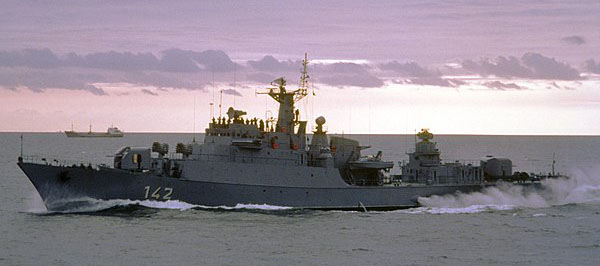
Berlin at sea 1st October 1985
The Volksmarine in 1965
In November 1960 the Seestreitkrafte was transformed into the Volksarmee (People’s Navy) and ships were given names as well as the numbers originally carried. These numbers were occasionally changed, but unfortunately the same numbers were often used on different ships at various times: For example, the number ‘822 was first used on a Delphin class patrol boat, then on the ‘P 6’ class FAC(T)S Hans Beimler, then Anton Suefkow, Julius Adler and Bruno Kuhn, and finally by the ‘Shershen’ class Frite Behn. The Volksmarine was now expenencing shortages of trained sailors. Its role widened in 1961 when, after the erection of the Berlin Wall, the navy was given full responsibility for direct protection of the sea border and patrol craft of the Frontier Guard were transferred to it. In 1962 an 18 month conscription periood had to be introduced. The construction programme could be realised without interruption and by the mid-1960s Peenewerft at Wolgast had delivered about six Robbe class landing ships and twelve ‘Labo’ landing craft.
Following the erection of the Berlin Wall (13 August 1961) the Grenzbrigade Küste der Grenzpolizei (GBK) or “Coastal Border Brigade of the Border Police” was also fusioned into the Volksmarine. The 1965 reorganization had all Fast attack forces (FAC brigades) combined into the 6th Flotilla stationed on the Bug peninsula, Rügen island. The enlargement of the Volksmarine was completed later with transfer of twelve ‘Osa’ class missile FACs from the Soviet Union. But the most important Volksmarine expansion and modernization program began in 1969. With the exception of missile craft (another three added in 1976) almost all types were replaced by new ones. At first new construction included thirty Libelle’ class MTBS, fifty-three small ‘Kondor’ class minesweepers, eighteen Bremse class patrol craft and fourteen “Frosch class landing ships (three further units were under construction at that time). In the 1970s, the Volksmarine personal rose to 18,000 personal.
Strenght in 1965
- 4 ASW Frigates
- 67 CPBs*
- 78 Fast Attack Craft (Torpedo/Missile)
- 13 sub-chasers
- 23 MWV**
- 18 LST/LCs
- 1 Fishery PV.
*Coastal Patrol Boats
** Mine Warfare Vessels (Minelayer/minesweepers)
The Volksmarine in 1980
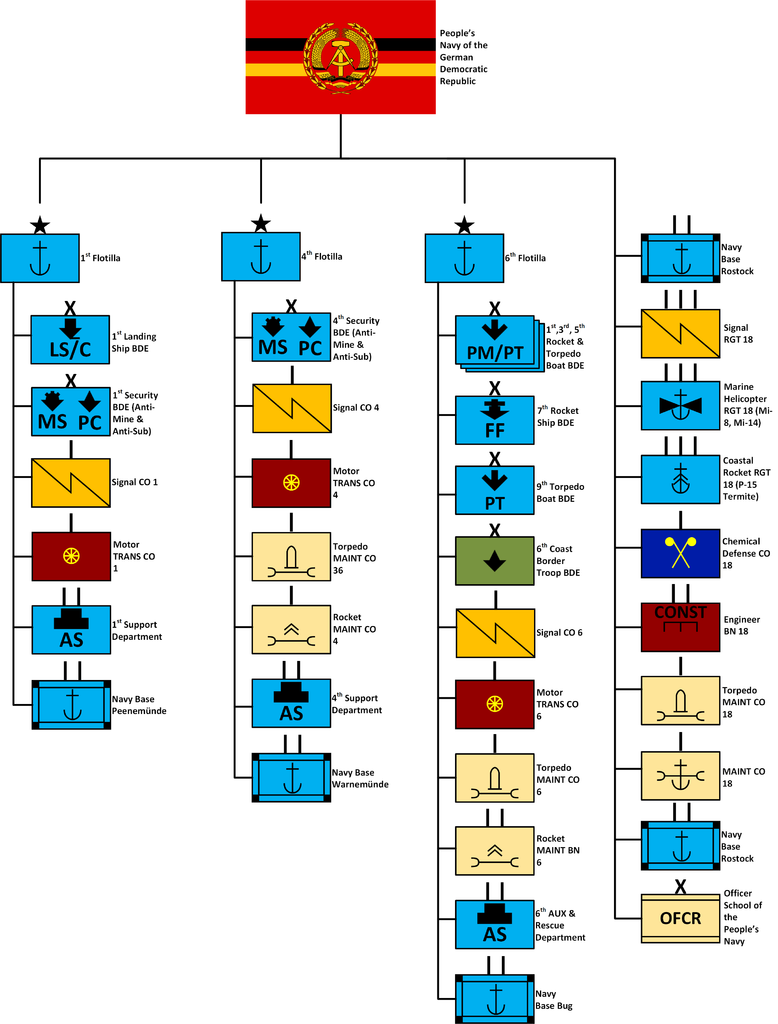
Organization as of 1988
By 1982 the minesweepers, MTBS, patrol craft and landing ships were replaced by new vessels, The ASW programme was started in 1978 to replace the ex-Soviet ‘Riga’ class frigates by ‘Koni’ class units and the Hai class submarine-chasers by domestically-built Parchim class corvettes. The corvette construction programme was concluded in 1985 and three frigates were purchased by 1986.
The last stage of the Volksmarine modernisation started in 1984 and comprised updating of the strike force, which was composed of several, mostly outdated, missile and torpedo craft. The objective of this programme was to produce all missile-armed squadrons as the FAC(T)s were regarded as unsuitable for modern warfare. The programme consisted of the purchase of ex-Soviet Tarantul class missile craft and the construction of much smaller, locally designed Balcom 10′ missile craft fitted with a new generation of missiles and sensors. Thanks to this programme the East Germans were to have a more balanced and homogeneous coastal force than any other Sovier satellite state. The navy was to have a considerable strike force, coastal ASW capability, large amphibious lift capacity and numerous mine warfare vessels.
From the early 1980s, together with the Soviet and Polish navies, the Volksmarıne took part in the annual joint cruises and exercises of the Warsaw Pact Baltic Joint Squadron, usually deploying one or two frigates accompanied by auxiliaries. The three-week exercises included North Sea deployment. The supply ship force was strengthened in order to provide adequate logistic support for sustained operations in the North Sea and Norwegian Sea.
In 1980 the Volksmarine comprised the Ist Flotilla (landing ships, ASW ships, minesweeping and support ship divisions), 4th Flotilla (frigates, ASW ships, minesweeping and support ship divisions), 6th Flotilla (one missile and two torpedo FACS brigades). The Grenzbrigade Küste (Coastal Border Brigade) of 4100 men, in three divisions was subordinated to the Ministry of the Interior in 1989.
Soviet-built fighter-bombers were acquired to constitute a marine air strike force. In the last five years of the regime in 1985 – 1989, the Volksmarine was increasingly active -if not seemingly agressive- causing some 180 reported incidents due to a maritime border dispute with Poland in the Pomeranian bay. Conflict between two neighbout Warsaw Pact countries seemed to illustrate an already crumbling edifice but this conflict was diffused by subsequent negotiations and about 1/3 of the disputed maritime area (notably its lucrative fishery areas) were allocated to the GDR.
Essentially, the The Volksmarine was ranked as a “green water navy”, coastal defence force, keeping however an offensive latitude both in mine warfare and and amphibious capabilities against NATO. These were embedded in training and planification, through various scenarios, only amplified in the 1980s as tension grew. It was part of the United Baltic Sea Fleets of the Warsaw Pact states and therefore trained with Poland on a daily basis, perfecting operational integration. The Poles completed the lack of submarines and missile destroyers by providing these.
The designated area of operations, Baltic Sea and its entrances were to be covered by both navies, freeing the Soviet Navy for larger scale operations, and notably attempting a breakthrough in the Skagerrak. In case of open warfare with NATO, the Volksmarine primary mission was to keep sea lanes open for Soviet reinforcements, while launching diversionary offensives along the shores of of hostile nationsin the area. Anti-submarine ships were to interdict the Bundesmarine’s access to the eastern Baltic, in conjunction of fast torpedo boats, and minefields to channel possible offensive into “killing zones”. Routine duty focused more on extensive reconnaissance mainly by minesweepers and specialized electronic surveillance boats.
The Volksmarine’s 6th Border Brigade was otherwise to prevent the “Republikflucht” (candidates to flee the GDR without permission) but from 1 November 1961 it was integrated into the Volksmarine organigram, and no longer independent. The Navy ensured there were always anough small patrol boats (some of which were unarmed), and surveillance posts along the coast for these attempts on civilian boats. That was the “other berlin wall”, at sea.
Commanders & Organization
- Konteradmiral Felix Scheffler (1 March 1956 – 31 December 1956)
- Vizeadmiral Waldemar Verner (1 January 1957 – 31 July 1959)
- Konteradmiral Wilhelm Ehm (1 August 1959 – 31 July 1961, 25 February 1963 – 30 November 1987)
- Konteradmiral Heinz Neukirchen (1 August 1961 – 24 February 1963)
- Vizeadmiral Theodor Hoffmann (1 December 1987 – 17 November 1989)
- Vizeadmiral Hendrik Born (11 December 1989 – 2 October 1990)
in 1985 the organization was as follows:
- 1st Flotilla in Peenemünde
- 4th Flotilla in Rostock-Warnemünde
- 6th Flotilla at Bug on Rügen Island
- 6th Border Brigade (Coast) in Rostock
- Torpedo Technical Support Company TTK-18, Sassnitz
- Naval Helicopter Wing (MHG-18), Parow, Stralsund
- Naval Flight Wing (MFG-28), Laage
- Navy Engineering Battalion (MPiB-18) Sassnitz
- Combat Swimmer Command (KSK-18) Kühlungsborn
- Coastal Missile Regiment (KRR-18) Schwarzenpfost
- Coastal Defense Regiment (KVR-18) Rostock (1988)
- Naval Propaganda Company (PRK-18) Rostock-Warnemünde
- Maritime Hydrographic Service (SHD) Rostock
- Naval NCO Academy “Walter Steffens” Parow
- Naval Officers Academy “Karl Liebknecht” Stralsund
- NCO School for Support Services, Dänholm (Stralsund)
- Training facilities
The Volksmarine in 1990
In 1990 the navy had a total of 12,300 men, of whom 4700 were affoat. 4100 in coastal defence (three battalions each of six SS-C-3 Styx missile launchers and five coastal batteries armed with thirty-five 6in guns) and 1000 in naval aviation. Ratings were on 1-year conscription. The main bases were Peenemünde (1st Flotilla), Warnemünde (4th Flotilla) and Dranske-Bug (5th Flotilla), with smaller bases at Sassnitz, Wolgast and Tarnewitz (HQ coastal defence). The naval aviation division, with bases in Parow, Peenemünde (both ASW squadrons) and Laage (fixed wing), consisted of twenty Mi-8 Hip’ and eight Mi-14 ‘Haze’ helicopters, as well as twenty Su-22 Fiter’ fighter-bombers. Naval infantry was established in 1985 at Prora on Rügen Island and comprised 1250 men of the 29th Motorised Rifle Regiment, which was replaced in 1987 by the 28th Regiment (part of the 8th Motorised Rifle Division).
In the 40 years from its foundation the German Democratic Republic appeared to be the most strictly pro-Moscow of the Soviet satellite states. The support of Soviet troops stationed there, the Communist Parry’s hold on a well-disciplined society and a relarively prosperous economy gave the impression that East Germany was the most reliable link in the chain of the socialist commonwealth. However, the relaxation of Soviet control and the increasing strength of independence movements in neighbouring eastern European states prompted a similar development in the GDR in the summer of 1989.
Within a few months the Communist regime was overthrown, and in their first free elections since 1933 East Germans voted for reunification with West Germany. The reunification came abour on 3October 1990, As with the rest of the apparatus of the East German state, the former Volksmarine, with three frigates, twelve landing ships, Sixteen corvettes, nineteen FAC(M)s, twenty FAC(T)s and twenty-seven minesweepers, which until 1990 had been under strict Soviet operational control, became the property of the united Germany. It was announced originally that no Volksmarine vessels would be taken over, but eventually fifteen combat ships and fifteen auxiliaries were incorporated into the Bundesmarine for a short time.
The Volksmarine was dissolved like other branches of the former NVA on 2 October 1990, which was the just a day before the official reunification of Germany. Part of the staff was absorbed into the Bundesmarine, renamed not to offend former VM cadree the “Deutsche Marine”, but other personal chose to enlist in the German Border Police as well. All these ships were not to Western standard and their integration into NATO’s scheme and structure were problematic. All the ships and associated equipment were either scrapped or sold in a few years. The most notable of these was the departure of the entire parchim class, 16 recent ASW frigates, to Indonesia (now the Lambung Mangkurat class). Most of the former Volksmarine vessels have since been disposed of, being either given or sold to civilian companies or various foreign navies. The largest such transfer was the sale of thirty-nine ships to Indonesia at a price of US$ 314m. Thus, for the fourth time in moderm history the German navy, or a part of it, was disposed of en bloc.
In fact a very few if any former Volksmarine vessels remain in service in the late 1990s and early 2000s. The last commander of the Volksmarine was Vizeadmiral Hendrik Born, which contributed to a commemorative book by historians Dieter Flohr and Peter Seemann published in 2009 “Die Volksmarine”, a comprehensive, illustrated history.
Strenght in January 1990:
- 3 Koni class Frigates
- 16 Parchim class corvettes
- 5 Tarantul class corvettes
- c30 FACs (missiles+torp)
- 50 Minesweepers/minelayers
- 32 landing ships & crafts
Read More
wikimedia, the warsaw pact
Coastal forces of the GDR, Navypedia
Index of the GDR navy – Navypedia
Natalia Jackowska, The Border controversy Between The Polish People’s reoublic and the German democratric republic in the pomeranian bay
SOVIET STRATEGY AND NATO’S NORTHERN FLANK, William K. Sullivan Naval War College Review 1979
insidethecoldwar.org NATO & Navies of the Warsaw Pact 1982 PDF
The role of East European Warsaw Pact Forces in Soviet military planning (pdf)
The navies of the NATO opposition Warsaw Pact Baltic Fleet
Siegfried Breyer, Peter Joachim Lapp: Die Volksmarine der DDR, Bernard & Graefe Verlag
Robert Rosentreter: Im Seegang der Zeit, Vier Jahrzehnte Volksmarine, Ingo Koch Verlag
Klaus Froh, Rüdiger Wenzke: Die Generale und Admirale der NVA. Ein biographisches Handbuch.
Arrangement concerning the carrying of flags, pennants and standards on ships and boats of the People’s Navy
Volksmarine Fleet in detail
Major surface combatants
 Thälmann class Frigates (1956)
Thälmann class Frigates (1956)
Ernst Thälmann, Karl Marx, Karl Liebnecht, Friedrich Engels
Two brand new RIGA class frigates were purchased right away in December 1956 for 25 million Marks, commissioned with the coast defence force as I-61 and I-62. I October 1959, two more, modernized in USSR were purchased as 103 and 104, and they were further modernized in East Germany in 1964. Standard ASW Frigates (Project 50) named after well known German socialist figures, renumbered later as 121-124. Thaelmann suffered an engine fire while Marx was damaged in a storm. They were stricken in 1968-77. Read more.
 Rostock class Frigates (1978)
Rostock class Frigates (1978)
Rostock, Berlin, Halle
The lead ship was laid down as Nerpa, on 22 October 1974, launched 4 June 1977 and completed 31 December 1977, and tranferred to East Germany, renamed Rostock. She was scrapped after 1990.
Krechet was laid down on 19 January 1977, launched 3 July 1978 and completed on 31 December 1978, transferred too as Berlin, used a flagship and scrapped after 1990.
SKR-149 was laid down on 8 April 1983, launched 30 June 1984, completed 25 June 1985 and transferred as Halle, same as the others. Standard “Koni I” (Project 1159). Read more.
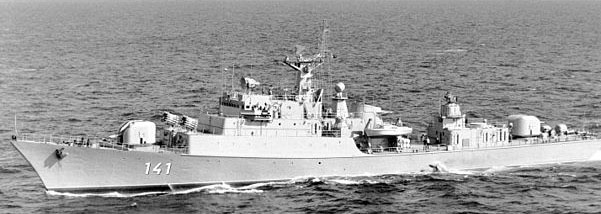
Rostock underway (F141)
⚙ Koni I class specifications |
|
| Dimensions | 95 m x 12.8 m x 5 m |
| Displacement | 1,140 tons standard, 1,900 tons FL |
| Crew | 140 |
| Propulsion | CODAG gas turbine, 2 diesels, 3 shafts 35,000 shp |
| Speed | 27 knots top speed |
| Range | 3,300 km (1,800 nmi; 2,100 mi)/14 knots |
| Armament | Twin 57 mm, twin 30 mm, SA-N-5 MANPAD, 2x RBU-6000, 12 DCs |
| Sensors | Positive-E, Spin Trough, Bass Tilt, Hull MFS |
 Parchim class Corvettes (1984)
Parchim class Corvettes (1984)
Prenzlau, Ribnitz, Waren, Angermünde, Lübz, Bad Doberan, Wismar, Parchim, Perleberg, Bützow, Bergen, Güstrow, Teterow, Ludwiglust, Grevesmühlen, Gadebusch.

The Volksmarine took over 16 ships of this class, the largest home-built class of ships in the whole of Germany at that stage, to replace the outdated Hai-class. Emergency plans of the Warsaw Treaty envisaged extensive ASW operations in coastal waters, attributed to the GDR, motivating the study and construction of these ships planned in the 1970s. They were entirey designed and built in Germany but in close cooperation with Soviet consultants for weapons systems and sensors, all at the standards of the Soviet Navy for full interoperability. The sonar systems and depth charges were also soviet-designed. They had a peculiarity, their anchor ejection system installed due to construction defects preventing anchors to not come off the hull normally.
A total of Parchim class were built total, 16 for the Volksmarine, and 12 for the Soviet Navy Baltic Fleet, the first time any Warsaw pact satellite country delivers ships for the Soviet Navy. All 16 GDR ships were decommissioned on October 1, 1990 due to new standards, NATO driven. Five were temporarily tested by the Bundesmarine for possible standardization, while the other 11 were intended to be resold to Indonesia after refurbishment in 1993. Eventually all remaining ships followed. They all received more modern, but not approved for export weapon systems and electronics. After this modernization, they were designated Project 133.1M NATO Parchim II class.
Project 133.1 specifics:
- Electronics:
- Radio measuring weapon control system MR 103 “Bars” +TV system
- Radio measurement system MR-302 Rybka (Strut Curve)
- Radio measuring system Bison 4 B
- Missile control system nichrome
- Torpedo fire control system Summer 204A
- Burja depth charge weapon control system
- MG322 sonar system
- MG329 sonar system, lowerable
- MG16 sonar system
- 1 × 57mm twin gun AK-725
- 1 × 30mm twin gun AK-230
- 2 × WABO system RBU-6000 (12 tubes)
- 2 × automatic depth charges
- 4 × 400 mm torpedo tubes OTA-40
- 2 FASTA with four 9K32 Strela-2 rockets
- Crew: 59
Armament:
Electronics:
The Parchim I received three diesels, in-line radial Zvezda M504. They had 8 blocks of 7 cylinders each, water-cooled and with a turbocharger. In total they had an output of three times 3,495 kW (4,752 PS), 1950 revolution per minute. Expensive and overheating at low speed, they developed cracks in the engine block.
⚙ Parchim class specifications |
|
| Dimensions | 69/75.2 m x 9.8 m x 2.7 m |
| Displacement | 793 tons standard, 845 tons FL |
| Crew | 57 |
| Propulsion | 3 shaft M504 diesels, 14,250 hp (10,630 kW) |
| Speed | 24.7 knots top speed |
| Range | 2,100 nmi (3,900 km) at 14 knots |
| Armament | 2x SAN-5, 2x57mm, 2x30mm, 2xRBU-6000, 4x400mmTTs |
| Sensors | Strut Curve, TSR-333, Muff Cobb, sonars MG-322, MG-239, ECM watch dog |
 Albin Kobis class Corvettes (1984)
Albin Kobis class Corvettes (1984)
Albin Kobis, Rudolf Egelhoffer, Fritz Gobig, Paul Eisenchneider, Hans Baimler.
These were five ex-Soviet built Tarantul I class missile corvettes (Project 1241), built by Yard 341 in Rybinsk. They were laid down in 1983-84 and completed in 1985-86 and ordered to replace half the ageing OSA-I lass missiles FACs still in service. They were also thought after for the local Bacom-10 class FACs. Read More
Amphibious warfare vessels
 Robbe class LSTs (1964)
Robbe class LSTs (1964)
Schwedt, Heisenhüttenstadt, Grimmen, Lübben, Hoyerswerda, Eberswalde
All built in Pennewerft, Wolgast, these six landing ships were known in Warsaw pact nomenclature as Project 47. Numbered 501-506 at first, then in the 610s serie, unsequence to lost NATO analysts. Operationally short lives as they were completed in 1964-65 and discarded in 195-78, BU except Hoyerswerda used as a test ship in Pennemunde.

⚙ Robbe class specifications |
|
| Dimensions | 64 m x 11 m x 2.5 m |
| Displacement | 600 tons standard, 790 tons FL |
| Crew | 32 |
| Propulsion | 2 shaft 40DM diesel, 4,800 hp |
| Speed | 14 knots top speed |
| Armament | Twin 57 mm AA,2×2 25mm AA |
| Payload | 14 tanks, T-54/55 type, 500 tons cargo or 600 men. |
| Sensors | Radar KSA3, later TSR333 |
 Frosch class LSTs (1976)
Frosch class LSTs (1976)
Hoyerswerda, Hagenow, Frankfurt-Oder, Eberswalde-Finow, Lübben, Schwerin, Neubrandenburg, Cottbus, Anklam, Schwedt, Eisenhüttenstadt, Grimmen, Nordped*, Südperd*
Fourteen LSTs built at Peenewerft, Wolgast, they were the largest ships in the Volksmarine, and ever built in East Germany before the Parchim class. Also called Project 108 in Soviet nomenclature, and 109 for the variant. They were fitted with a bow ramp, without bow doors, no stern door or ramp. Armament was comprehensive, including a quadruple Fasta-4M SAM (sixteen 9M32M), two twin 57mm/50 AK-725 AA guns, two twin 30mm/71 AK-230 guns, two MBU-2500 40 barrels 122mm A-215 Grad-M rocket launchers. They carried 12 tanks or 600 t cargo and 100 equipped troops. Project 109, NATO Frosch II* were the last two of the class, dedicated support ships. They had a 8-ton crane amidship and workshop equipments. On 1st October 1990, the Bundesmarine decided to put them on sale, and they were obtained by Indonesia, possibly still in service today (status unknown) under new names: Teluk Gilimanuk, Teluk Celukan Bawang, Teluk Cendrawasih, Teluk Berau, Teluk Peleng, Teluk Sibolga, Teluk Mando, Teluk Hading, Teluk Parigi, Teluk Lampung, Teluk Jakarta, Teluk Sangkulirang.

⚙ Frosch class specifications |
|
| Dimensions | 90.7 m x 11.1 m x 3.40 m (297 x 3 x 11ft) |
| Displacement | 1774/1950 tons Frosch I, 1530t tons Frosch II |
| Crew | 42(35 II) |
| Propulsion | 2 shaft 61B diesels, 9,500 hp |
| Speed | 18 knots top speed |
| Range | 2,000 nmi (3,600 km) at 10 knots |
| Armament Frosch I | 4x 57mm, 4x 30mm, 40 mines, 7 tanks |
| Armament Frosch II | 4x 57mm, 4x 25mm, 36 mines, 650t cargo |
| Sensors | Muff Cobb, Strut Curve, Don, Square head, High Pole |
 Labo class LSCs (1960)
Labo class LSCs (1960)
L91, L02, L03, L04, L05, L06, L07, L08, L09, L10, 2 more.
Ten Landing Crafts able to carry troops and vehicles (inc. tanks), built at Peenewerft, Wolgast, commissioned in May 1960-December 1962.
⚙ Labo class specifications |
|
| Dimensions | 41.1 m x 6.90 m x 1.10 m |
| Displacement | 180 tons standard, 285 tons FL |
| Propulsion | 2 shaft, 4x 6NVD26A diesels, 1000 hp |
| Speed | 10 knots top speed |
| Range | 1000 nmi at 8 knots |
| Armament | Two Twin 25mm/80 AA 2M-3. Load 2 T-54/55 tanks, 100 tons cargo |
| Sensors | TS-222 radar |
| Crew | 15 |
Fast Attack Crafts
 Max Reichpietsch class FAC(M) (1962)
Max Reichpietsch class FAC(M) (1962)
Max Reichpietsch, Albin Köbis, Josef Schares, Rudolf Eglhofer, Richard Sorge, August Lüttgens, Paul Eisenschneider, Karl Meseberg, Walter Krämer, Paul Schulze, Paul Wieczorek, Fritz Gast, Albert Gast, Heinrich Dorrenbach, Otto Tost, Josef Schares
Standard OSA-I fast attack crafts (missile), 15 transferred in 1962-65 and four in 1971, all named. The last came in replacement to the first three, vers as training vessels. The were first discarded in 1981, after cracks has been found in their engines. They were replaced by the training vessels. From 1984 they were discarded along replacement by the ‘Tarantul” boats and the remaining were fitted with chaff launchers. On 1st October 1990 they all had been discarded and disposed of. Three were sold to Lithiania in 1993, three to Latvia in 1994 and six to Estonia.
 Forelle class FAC(M) (1982)
Forelle class FAC(M) (1982)
I, G-01, G-02
These were experimental light alloy huled boats built by Rosslauer Schiffswerft in Rosslau. The first (“I”) was an unnamed prototype tested in October 1955. After an accident off Peenemünde she was recovered and completely rebuilt in 1956, used for further testings until discarded in late 1958. Two more, called G-01 and G-02 were produced on an improved design, commissioned in 1961. They were propelled by M50F diesels for a total of 4800 bhp, and better range. After successful trials, both were used by the border guards from August 1961, but only served a few years: On 10 july 1965 they were discarded already, BU.
Quickspecs (I): 65 tons, 27,7 x 7.2 x 1 m (90 ft 10 in, 23 ft 7 in, 3ft 3 in), 2 shafts MB 511 diesels, 5000 bhp for 38 knots, range 1000 nm (est.). Armed with two 12.7 mm DsHk HMGs and two planned 21-in torpedo tubes, never installed. Complement: 12.
 ‘BALCOM 10’ class FAC(M) (1990)
‘BALCOM 10’ class FAC(M) (1990)
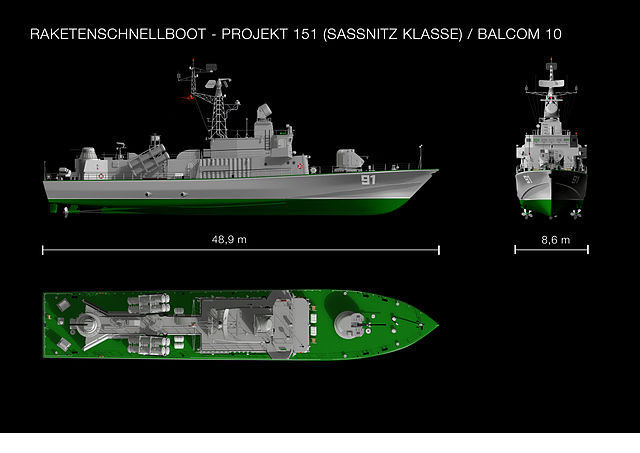
Sassnitz, Ostebaad Sellin, Ostebaad Binz, 594, 595, 596. 597-599 cancelled 1990.
This local design was intended to replace the ageing OSA-I in alternative to the Tarantul ships (only two delivered, one BU, three exported, three cancelled). Development started in 1985, developed to be built at Wolgast, Pennewerft. Five Project 151 Fast Attack Crafts (Missile), NATO “BLACOM 10”. They were also known as the Sassnitz class, from the lead ship. Final development ended in 1988 and construction proceeded with the first ship launched in May, July, October and December 1990.
These were an interesting common German-Soviet project. Two were delivered without missiles, and classified as patrol boats. “Sassnitz” und “Seebad Binz” were retrofitted at Peenewert with MTU engines and other equipments after the reunification, recommissioned as BG 22 “Neustrelitz” and BG 23 “Bad Düben”. This created the Sassnitz-class while the third boat, never fully completed (“Sellin”), was broken up. Three boats were eventually delivered to Poland, known as the Orkan-Class. Four hulls in various stages of construction were towed to the “coal-pier” at PeeneWerft, Wolgast laid up. After many attempts to sell them for years, one was evntually equipped with a Soviet engine and another partially equipped with machinery. The two other boats were hulked, scrapped in 2010.
See also: http://www.s-boot.net/englisch/sboats-vm-balcom.html
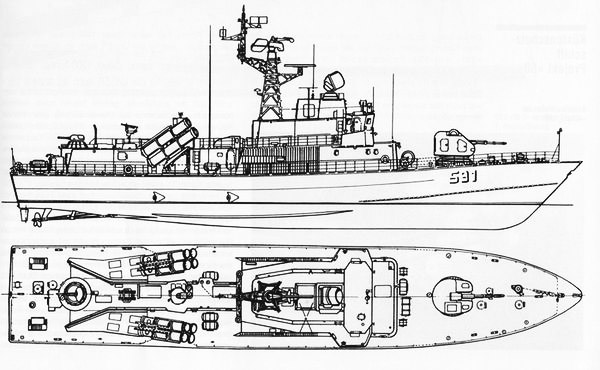
⚙ Sassnitz class specifications |
|
| Dimensions | 48.9 m x 8.60 m x 2.2 m |
| Displacement | 347 tons standard |
| Propulsion | 2 shaft, 3x M720 diesels, 16,200 hp |
| Speed | 35 knots top speed |
| Range | 1,600 nmi at 10 knots |
| Armament | Two quadruple SS-N-25 SSM, 4 SAN-4 SAM, 1x 76mm, 1x 30 mm Gatling, 2×16 chaff launchers. |
| Sensors | Radars Plank Shave, Bass Tilt |
| Crew | 33 |
 ‘P6’ class FAC(T) (1957)
‘P6’ class FAC(T) (1957)
Twenty-Eight Project 183 Fast Attack Crafts
If the bulk were transferred in 1957 (S numbers are irrelevant as they were changed many time, in accordance of WaPac intel disruption practices. Some arrived in 1958 and the remainder in September 1960 with with ‘pot head’ radars. They also all received names in 1960. On 31 August 1968 Bänsch collided with the Danish Drottingen and sank. They were gradually discarded in the 1970s or sold (three to Tanzania for example, rebuilt with enclosed bridge). Three were used as target boats in 1971, two were modified and became rescue boats, BU 1974-75. Three were refitted to serve as border guards boats until 1971. One became the trial ships V41, BU 1973. They were either stationed in isolated havens and one became an accomodation ship for the others, active until 1981. Four were rebuilt torpedo recovery crafts became Schwalbe class vessels.
 ‘Iltis’ class Fast Attack Craft (Torpedo) (1960)
‘Iltis’ class Fast Attack Craft (Torpedo) (1960)
Project 63, 38 boats
These small boats were a derivative of the WW2 LS class, midget MTBs intended to serve onboard commerce raiders and used in success in the Aegean in 1944. Conditions of the western part of the Baltic made sense for these light designs to be used, favoring surprise attacks with light and ultra-fast FAC(T). Two prototypes were ordered in 1958 from four yards, Pennewerft (Iltis design, project 63) and Rosslauer Schiffswerft (Project 81 hydrofoils), Yachtwerft Berlin (Hydra project 68), Boots & Preparaturen, Griefswald (Möwe, Project 58).
All came out with different solutions, between shapes and construction. The first were rather class, Project 81 hydrofoils used the aluminium alloy AIMg 4.5, Hydra was built with aluminium frames and wood, Möwe in GRP. They last stayed at planning stage. Only the first three were approved, built for comarative tests at Pennewerft in 1959, based on the following dimensions of 13.8 x 3.6 x 0.52 m, deleted c1964.
The iltis class started with six pre-production boats (V-named), commissioned 1963-64 and abundantly tested. V-01 has been discarded in 1966 and is now in exhibition since at Pennewerft, Wolgast. The others were discarded in 1958-72. However 30 production boats followed, commissioned in 1964-66. All frequenty renumbered for deceiption, and stricken in 1973-77, a short service span which was explained by a hard service (they developed cracks and just wornout engine) and the arrival of more modern FAC(M) making them obsolete, as they were replaced by the Libelle class. 923 became a memorial, the only serie boat preserved.
Quick specs:
17.4 tons displacement FL, 14.9 x 3.4 x 1.1m, 2 shafts M50F4 diesels 2400 bhp 52 kts, range 230 nm, 2x 21-in TTs, Radar KSA, TSR 222, crew 3.
 ‘Hydra’ class Fast Attack Craft (Torpedo) (1958)
‘Hydra’ class Fast Attack Craft (Torpedo) (1958)
Project 68, 24 boats
Second project considered for mass production Project 68 (NATO “Hydra”) came from Yachtwerft, Berlin. Larger and slower, they were more powerfully armed and versatile. They had a wooden hull framed by aluminium alloy stepped, to accomodate aft to manage three wells for rear-launched, tail-first torpedoes like WWI MTBs (and many in WW2 as well). This solution was stil preferred for small MTBs as sparing space. But operationally it was problematic. The large aft deck could be used to drop mines or carry a commando for specops.
The first unnamed prototypes were built in 1958-60, tested then discarded in 1963. This was followed by a limited serie of 24 boats, commissioned in 1964-68. Renumbered in the 900 series (changed several times) they saw little service of a few years. The first were discarded in 1968 up to 1975, replaced by the Forelle class. In reality these were 23 boats active as one was broken up soon after sea trials. 941 has been preserved at Dresden, 930 became a TS ashore, 943 became Diana, a service hulk in Wiek.
Quick specs:
19.2 tons displacement FL, 17.1 x 3.6 x 1.5 m, 2 shafts M50F4 diesels, 2,400 bhp 50 kts, 3x 21-in TTs, Radar KSA, TSR 222, crew 3.
 Breitscheld class Fast Attack Craft (Torpedo) (1969)
Breitscheld class Fast Attack Craft (Torpedo) (1969)
Project 26, 18 boats
The East German Navy needed proven, large and modern Fast Attack Crafts and to replace the old ‘P6’ FAC(T) in the late 1960s. The ideal solution were the Project 203 boats (NATO ‘Shershen’), which took the name of the P6 boats they replaced from 1969-70. Three became TS in 1977, four discarded 1984, and the others in 1985, 86, and the last six in 1990, all BU. Specs as the Soviet Shershen class.
Sub-chasers
 SO I class Sub-chasers (Project 201M)
SO I class Sub-chasers (Project 201M)
On eleven transferred, six, then three commissioned in Nov-Dec. 1959, and the last two in August 1960. They were named from 1961 but numbered also and the latter changed many times. In 1965, all were transfered to the frontier guards, renumbered in the G- series. In 1972, four were sent back to Volksmarine service for a time but all were discarded in the late 1970s – early 1980s.
 Hai I Sub-chaser (Project 12.1)
Hai I Sub-chaser (Project 12.1)

“Designed since 1958, she was built as experimental craft to develop the ‘Hai’ class for which she was the prototype and commissioned without name on 26 November 1963 for trials. She was completed with two large flat funnels abreast. Initially she carried no armament, later being fitted with guns only and finally ASW weapons were introduced. She could also carry a 45mm gun aft.” As finally armed she had this single 45/78 SM-21ZIF, 2 x 2 – 25/80 2M-3M, 2 x 5 RBU-1200 ASWRL, 2 DCR. Sensor-wise she carried KSA-3 radar, Tamir-11 sonar.
 Hai II class Sub-chasers (Project 12.3)
Hai II class Sub-chasers (Project 12.3)
“Designation ‘Project 12.3’, this vessel was fitted with the CODAG experimental power plant, as the second ‘Hai’ class prototype. The planned twin 57mm AA mounting was not fitted on the afterdeck because of stability problems. She was commissioned as the experimental vessel V-81, and renamed Werdau in 1973.” She had two twin 25mm/80 2M-3M, two quintuple RBU-1200 ASWRL, 2 DCR, and a Reya radar, Tamir-11 sonar.
 Hai III class Sub-chasers (Project 12.4)
Hai III class Sub-chasers (Project 12.4)
Grevesmühlen, Gadebusch, Wismar, Sternberg, Parchim, Ludwigslust, Perleberg, Bad Doberan, Bützow, Lübz, Ribnitz-Damgarten, Teterow
Displacement 320 tons FL. 51.7 m 6.60 m wide, 2.58 m high. 3 shafts, 2 Pirna 014 gas turbines and a 40D diesel, 9860 + 2000 = 11860 hp, 32 kts, 1,000 nm/18 knots. Armed with two twin 30mm/71 AK-230, 2 x 5 RBU-1200 ASWRL, 2 DCR. Reya, Rys’ radars, Tamir-11 sonar, crew: 29.
Mine Warfare Vessels
 Schwalbe class minesweeping boats (1952)
Schwalbe class minesweeping boats (1952)
Also called No411 minesweeping boats (1953-1958), the ‘Schwalbe’ were built in large quantities by Ernst Thälmann, Brandenburg, Yachtwerft, Berlin. Series III boats had changed hull shape and additional ballast, improved stability made possible installation of twin 25mm mount. They were rather mediocre and discarded from 1957 to 1986.
Displacement 84 tons FL, 28.8 x 4.40 x 1.31m, powered by two shafts 6VD224 diesels or 6NVD26A diesels 300/530 hp, 11.3 kts, 500 nm/11 kts. Equipped with a twin 12.7mm/79 and an MT-1 mechanical, TEM-2, ST-2 magnetic and BAT-2 acoustic minesweeping gears or for the serie 3 the same and twin 25mm/80 2M-3 AA. No radar, Crew 14.
 Habicht I/II class MWVs (1953)
Habicht I/II class MWVs (1953)
Suhl, Schwerin, Stralsund, Neubrandenburg, Cottbus, Bergen, Frankfurt/Oder, Stralsund(ii), Sassnitz, Wolgast, Greifswald
Ordered on 1 January 1951 from Volkswerft Stralsund with a design really close to the wartime ‘M40’ minesweepers, but with a modern diesel propulsion. Apparently twelve ships built, laid down 1952-53, launched 1953-55 in two classes, “Habicht I” and “Habicht II” (NATO) called internally 6.31 coastal minesweepers and 6.11. All built at Volkswerft Stralsund and stricken in 1965-70.
Displacement 370 tons standard, 510 tons FL, Dimensions 59.1 x 8.00 x 2.30, powered by two 6KVD43A diesels 2400 shp, 18 kts, 1400 nm/10 kts, armed with a 85 mm gun, four twin 25 mm AA, 2 DCT and 22 DCs in reserve, 18 mines. On Habicht II, 20 mines. They were equipped with an MT-1 mechanical gear, TEM-2, ST-2 magnetic gear, BAT-2 acoustic minesweeping gear. The 6/35 and 6/36: had a single 37mm/63 70K, and four single 25mm/80 AA, an 84KM gear. Electronic equipment: They carried a Tamir-11 sonar. Crew 38.
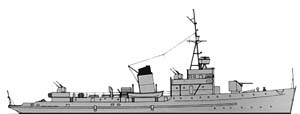
 Krake class MWVs (1957)
Krake class MWVs (1957)
Berlin, Halle, Dresden, Rostock, Gera, Magdeburg, Erfurt, Karl-Marx-Stadt, Potsdam, Leipzig
Also called 3001 ocean minesweepers (1957-1958), Krake class was NATO denomination. Ten ships built at Peenewerft, Wolgast, a development of the previous vessels, and originally the first four were reported attributed to Poland. Dresden, berlin, Leipzig, Karl marx Stadt were used as TS before deletion. All served until 1972.
Displacement standard 553 tons, 741 tons FL. Dimensions 66.1 x 8.40 x 2.52m, two 6KVD43A diesels, 2,400 shp, 16.5 kts, 2,465 nm at 12 kts armed with a single 85mm/52 90K, five twin 25mm/80 2M-3M AA guns, two DCR, a MKT-1 mechanical, TEM-2 magnetic, AT-2 acoustic minesweeping gears, mine-clearing line charges and 30 mines. They carried for navigation a KSIB radar, and a Tamir-11 sonar for ASW warfare. Crew 38.
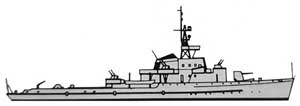
 Greifswald (NATO Kondor I) class Ocean Minesweepers (1970)
Greifswald (NATO Kondor I) class Ocean Minesweepers (1970)
Anklam , Ückermünde, Demmin, Malchin, Altentreptow, Pasewalk, Templin, Neustrelitz, Vitte, Zingst, Prerow, Graal-Müritz, Kühlungsborn, Ahrenshoop, Kirchdorf, Boltenhagen, Klütz, Rerik, Bansin
These ships were planned replacements tor the obsolescent ‘Habicht’ and ‘Krake’ classes. They were noticeably smaller and more numerous which also reflected changes in Volksmarine mine warfare operational concepts. The first vessel was a prototype named V-31, which made extensive sea trials and fixed later ported on production ships, all built at Peenewerft, Wolgast. The first production vessel, Greifswald (N°301), was laid down October 1967. Twenty-one were built in all, the last completed and commissioned in 1970.
Modernization only happened in the late 1980s and consisted in adding a quadruple Strela-3M SAM. In the mid-1970s already, these ships were transferred to the Frontier Guard, while retaining their sweeping gear, renumberered with ‘G’ prefix. The exception was Anklam, Bergen and Greifsioald, used as training ships of the Kondor II crews. Bergen latrer became the fishery protection vessel Warnemünde and was drydocked to be rebuilt and fitted for her new role (which included removal of the sweeping gear, some armament and equipments), but gaining an enlarged superstructure. She still served as such after the reunification, under supervision of the Federal Agriculture and Fisheries ministry.
Quickspecs: Displacement 339 t Standard, 377 t FL, Dimensions 52 x 7.10 x 2.40. Propulsion 2 shafts 40DM diesels, 5,000 shp, 20 kts, 2,000 nm @15 kts. Armed with two twin 25mm/80 2M-3M AA, SDGR/L USV, GKT-1 mechanical gear, HFG-13 and HFG-24 magnetic gear, AT-2 acoustic minesweeping gear, 30 mines. Carried a TSR-333 radar and KLA-58M sonar. Crew 24.
 Wolgast (NATO Kondor II) class Ocean Minesweepers (1971)
Wolgast (NATO Kondor II) class Ocean Minesweepers (1971)
Wolgast, Kamenz, Stralsund, Wittstock, Kyritz, Neuruppin, Strassburg, Röbel, Pritzwalk, Rathenow, Dessau, Bitterfeld, Tangerhütte, Genthin, Zerbst, Roßlau, Oranienburg, Jüterbog, Bernau, Eilenburg, Riesa, Wilhelm-Pieck-Stadt Guben, Sömmerda, Eisleben, Gransee, Zeitz, Hettstadt, Altenburg, Schönebeck, Grimma
Basically a lenghtened and larger version of the previous vessels, 30 built in all at Pennewrft Wolgast (namesake lead ship also prototype V32/811 Wolgast) Called in Soviet nomenclature Project 89.2. The hull was lengthened to accommodate additional armament, and more modern minesweeping gear. Modernization including the same addition of a quad 4 Fasta-4M SAM (with 16 9M36M in reserve) and a FRG-1 magnetic minesweeping gear. The first was laid down in early 1970, the last commissioned in November 1973. Not all were extant in 1990. Some were stricken in 1981, others sold to Latvia (1), Indonesia (6), Uruguay (2).

Quickspecs: Displacement 437 t standard, 471 ton FL, 56.8 x 7.72 x 2.48. Machinery: two shafts 40DM diesels, 5,000 bhp, 18.4 kts, 2,000 nm/15 kts, three twin 25mm/80 2M-3M, Minesweeping gears SDGR/L, MSG-1S/SP, MSG-2/SP USV, HFG-13, HFG-24 (magnetic), AT-2 (acoustic), mine clearance charges. Carried a TSR-333 radar, M-69 sonar, crew 30
Patrol Vessels
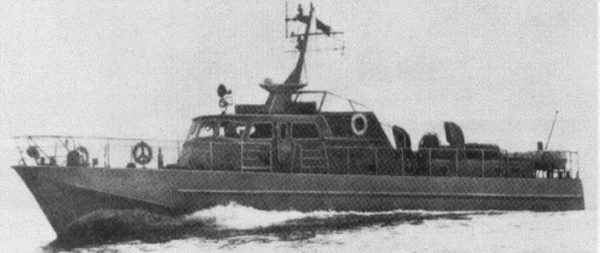
 ‘SAS’ class Coastal Patrol Boats (1948)
‘SAS’ class Coastal Patrol Boats (1948)
Seven G-numbers German-built (Kremer & Sohn) 90 tons patrol craft for he Sassnitz fishing company. Transferred to the frontier guards in 1965, refitted with enclosed bridge and masts with radars. However they were unarmed. One discarded 1975, the others 1985-88 and a few converted to civilian use. Quickspecs: 90t, 21 x 5.5 x 2.79m, 1 shaft 4NVD 36 diesel 150 bhp 11 kts, crew 7.
 ‘Delphin’ class Coastal Patrol Crafts (1952)
‘Delphin’ class Coastal Patrol Crafts (1952)
Built in Yachtwerft, Berlin, Delphin 1-12 were commissioned in Nov. 1953-July 1954. Roads protection boats officially, transferred 1957 to the border guards, with G-numbers. In the early 1960s they were modernized with 6NVD26A diesels and light tripod masts. Discarded 1964-69, BU, one preserved and sent to the Gesellshaft für sport & technik.
Quickspecs: 44 tons, 22.4 x 4.4 x 1.4m, 2 shafts Jumo 205C diesels 600 bhp 13 kts range 130 nm. Armed with 1-2 12.7 mm DsHk. Crew 10.
 ‘Tummler I/II’ class Coastal Patrol Boats (1954)
‘Tummler I/II’ class Coastal Patrol Boats (1954)
Both classes of coastal patrol crafts were built by Yachtwerft in Berlin: 181-186 and G-111, 112, S-21, 22, 24, 25, so two batches of eight, twelve total. They were at first denominated “roads protection boats”, with an higher and enclosed bridge for the second serie. Commissioned in the summer of 1954 for the Tumbler I class and Augu-Nov 1956 for the second class, stricken and BU 1963-66.
Quickspecs: 38 tons, 22.4 x 4.4 x 1.3 m, 2 shafts Jumo 205C diesels 600 bhp 13 kts range 1350 nm. Tummler II 2 IFA EM-6-20 diesels 240 bhp 11 kts. Armed with two twin 12.7 mm DsHk, crew 9.
 ‘Sperber I’ class Coastal PBs (1950)
‘Sperber I’ class Coastal PBs (1950)
6 coastal patrol boats: No13, 14, No15, No16, No17-20, No21, No22, No23, No24, No25, No26, No27-32.
20 ordered before even the formal foundation of the GDR in 1949. Only six were evetually buuilt in 1950 by Yachtwerft Berlin and armed at Wolgast, comm. Nov. 1950 and 1951. In 1962, transferred to the border guards (G-series) and Stricken and BU in the late 1960s.
Quikspecs: Displacement standard 72 tons. 26.8 x 4.60 x 1.4m, 3 shafts Jumo 205D diesels, 1,60 bhp, 22 knots, range 400 nm (18 kts), 3x 20mm/70 Mk 7, 2 DCR, Tamir-10 sonar. With the border guards: Rearmed with of four 12.7 mm DsHk, ot 14.5 mm KPVT, re-engined with two 6NVD26A diesels (2×540 bhp) on the outer shafts. Speed 12 kts but range increased;
 ‘Sperber II’ class Coastal PBs (1952)
‘Sperber II’ class Coastal PBs (1952)
20 coastal patrol boats: 111-118, 121-126, 131-136.
Improved versions, with a lenghtened hull, six built July 1951-April 1952, at Pennewerft Wolgast, and others at Yachtwerft Berlin. All armed like the previous class, equipped the same, but heavier. They all received WW2 lend-lease Soviet 20 mm Oerlikon AA guns. The first however received a WW2 quad 20 mm Flakvierling, or three 20 mm FLAK 38. By June 1952, this was unformized with 12.7 mm DsKH, four, and the remainder had their bridge rebuilt as sub-chasers, equipped with Depht charge racks in 1955 and a Tamir Sonar. Re-engineeres as the Sperber I early 160s, deleted 1963-69. Three, disarmed became TS.
Quickspecs: Displacement standard, 68 tons, 78 tons fully loaded. 28.8m x 4.80m width, 1.50m, 3 shafts Jumo 205D diesels, 1,600 shp, 24 knots, 400 nm(18 kts), two 20mm/70 Mk 7, 2 DCR, Tamir-10 sonar 20. Later 1956, G-111, 112, 121, 122, 131, 132, 141, 142 received two 6NVD26A diesels (550hp, 12kts) and a new Zarnitsa radar.
 ‘Bremse’ class Coastal Patrol Boats (1970)
‘Bremse’ class Coastal Patrol Boats (1970)
Ten boats (Project GB-23) built by Yachtwerft Berlin as replacement for the ‘Delphin’ and ‘Tummler’ classes. Numbered G-30-33, G-34-39 and then G-730-739 comm. 1970-71. After the reunification they were kept operatinfg with the Federal border guards, known as the “Prignitz class”, and all received names and BG numbers. Five sold to Tunisia, two to Malta, two to Jordan. In 1973, a derivative with an enclose bridge called Project TB-23 saw four sold to Tanzania.
Quickspecs: 38 tons, 23.1 x 4.7 x 1.4m, 2 shafts 2 6VD18/15HA diesels 500 bhp 17 kts range 300 nm, unarmed, radar TR 222, crew 6.
Misc. Vessels
 Ernst Thälmann (1955)
Ernst Thälmann (1955)
Built for the Royal Danish Navy as the fishery protection vessel Hvidbjörnen. Scuttled 29 August 1945 in the Great Belt, she was raised and repaired by the Kriegsmarine, and was found damaged at Warnemünde after the war. Take over by the GDR on 12 June 1950, she was refitted by Peenewerft, Wolgast (new bridge and armament) and entered Volksmarine service on 10 December 1952 as a training ship.
Displacement standard, 914/1100 tons FL – Dimensions 65.6 x 9.82 x 5.40, VTE, 2 boilers, 1200 shp, 13.2 kts. Range 2500 nm(12 knots). Armed with the four 37mm/63 70K, twin 25mm/80 84KM, radar, crew 56 + 56 cadets.
modifications: 1956: – 2 x 1 – 37/63, 2 x 1 – 25/80; + 1 x 1 – 85/52 90K, 1 x 2 – 25/80 2M-3. Naval service: In 1956, after re-boilering and rearming, she was transferred to the Frontier Guard. She was hulked in 1961 and scrapped in 1968.


 Latest Facebook Entry -
Latest Facebook Entry -  X(Tweeter) Naval Encyclopedia's deck archive
X(Tweeter) Naval Encyclopedia's deck archive Instagram (@navalencyc)
Instagram (@navalencyc)





 French Navy
French Navy Royal Navy
Royal Navy Russian Navy
Russian Navy Armada Espanola
Armada Espanola Austrian Navy
Austrian Navy K.u.K. Kriegsmarine
K.u.K. Kriegsmarine Dansk Marine
Dansk Marine Nautiko Hellenon
Nautiko Hellenon Koninklije Marine 1870
Koninklije Marine 1870 Marinha do Brasil
Marinha do Brasil Osmanlı Donanması
Osmanlı Donanması Marina Do Peru
Marina Do Peru Marinha do Portugal
Marinha do Portugal Regia Marina 1870
Regia Marina 1870 Nihhon Kaigun 1870
Nihhon Kaigun 1870 Preußische Marine 1870
Preußische Marine 1870 Russkiy Flot 1870
Russkiy Flot 1870 Svenska marinen
Svenska marinen Søværnet
Søværnet Union Navy
Union Navy Confederate Navy
Confederate Navy Armada de Argentina
Armada de Argentina Imperial Chinese Navy
Imperial Chinese Navy Marinha do Portugal
Marinha do Portugal Mexico
Mexico Kaiserliche Marine
Kaiserliche Marine 1898 US Navy
1898 US Navy Sovietskiy Flot
Sovietskiy Flot Royal Canadian Navy
Royal Canadian Navy Royal Australian Navy
Royal Australian Navy RNZN Fleet
RNZN Fleet Chinese Navy 1937
Chinese Navy 1937 Kriegsmarine
Kriegsmarine Chilean Navy
Chilean Navy Danish Navy
Danish Navy Finnish Navy
Finnish Navy Hellenic Navy
Hellenic Navy Polish Navy
Polish Navy Romanian Navy
Romanian Navy Turkish Navy
Turkish Navy Royal Yugoslav Navy
Royal Yugoslav Navy Royal Thai Navy
Royal Thai Navy Minor Navies
Minor Navies Albania
Albania Austria
Austria Belgium
Belgium Columbia
Columbia Costa Rica
Costa Rica Cuba
Cuba Czechoslovakia
Czechoslovakia Dominican Republic
Dominican Republic Haiti
Haiti Hungary
Hungary Honduras
Honduras Estonia
Estonia Iceland
Iceland Eire
Eire Equador
Equador Iran
Iran Iraq
Iraq Latvia
Latvia Liberia
Liberia Lithuania
Lithuania Mandchukuo
Mandchukuo Morocco
Morocco Nicaragua
Nicaragua Persia
Persia San Salvador
San Salvador Sarawak
Sarawak Uruguay
Uruguay Venezuela
Venezuela Zanzibar
Zanzibar Warsaw Pact Navies
Warsaw Pact Navies Bulgaria
Bulgaria Hungary
Hungary

 Bundesmarine
Bundesmarine Dutch Navy
Dutch Navy Hellenic Navy
Hellenic Navy Marina Militare
Marina Militare Yugoslav Navy
Yugoslav Navy Chinese Navy
Chinese Navy Indian Navy
Indian Navy Indonesian Navy
Indonesian Navy JMSDF
JMSDF North Korean Navy
North Korean Navy Pakistani Navy
Pakistani Navy Philippines Navy
Philippines Navy ROKN
ROKN Rep. of Singapore Navy
Rep. of Singapore Navy Taiwanese Navy
Taiwanese Navy IDF Navy
IDF Navy Saudi Navy
Saudi Navy Royal New Zealand Navy
Royal New Zealand Navy Egyptian Navy
Egyptian Navy South African Navy
South African Navy






























 Ukrainian Navy
Ukrainian Navy dbodesign
dbodesign